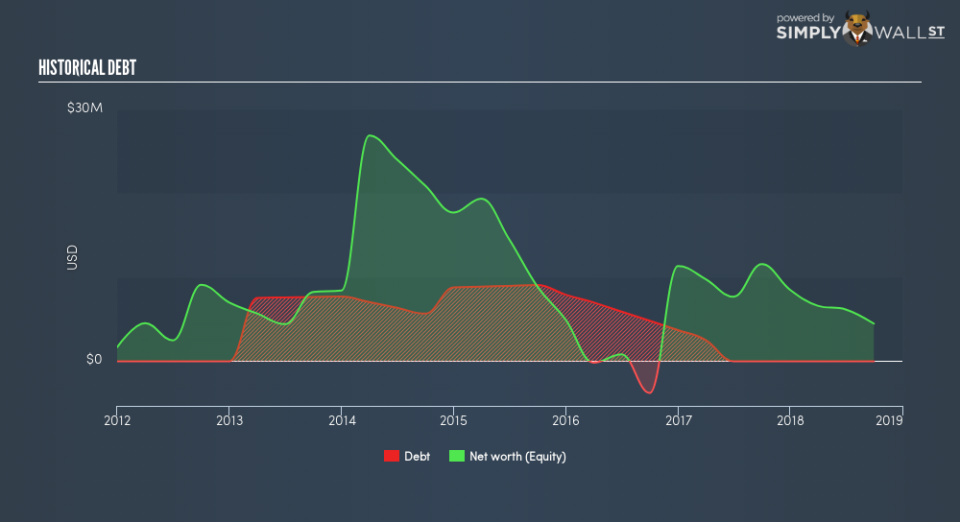How Financially Strong Is Neuralstem Inc (NASDAQ:CUR)?

Neuralstem Inc (NASDAQ:CUR), which has zero-debt on its balance sheet, can maximize capital returns by increasing debt due to its lower cost of capital. However, the trade-off is CUR will have to follow strict debt obligations which will reduce its financial flexibility. While CUR has no debt on its balance sheet, it doesn’t necessarily mean it exhibits financial strength. I recommend you look at the following hurdles to assess CUR’s financial health.
See our latest analysis for Neuralstem
Is financial flexibility worth the lower cost of capital?
Debt capital generally has lower cost of capital compared to equity funding. Though, the trade-offs are that lenders require stricter capital management requirements, in addition to having a higher claim on company assets relative to shareholders. The lack of debt on CUR’s balance sheet may be because it does not have access to cheap capital, or it may believe this trade-off is not worth it. Choosing financial flexibility over capital returns make sense if CUR is a high-growth company. CUR’s revenue growth over the past year was an impressively high triple-digit rate, therefore the company’s decision to choose financial flexibility is justified as it may need headroom to borrow in the future to sustain high growth.
Can CUR meet its short-term obligations with the cash in hand?
Given zero long-term debt on its balance sheet, Neuralstem has no solvency issues, which is used to describe the company’s ability to meet its long-term obligations. But another important aspect of financial health is liquidity: the company’s ability to meet short-term obligations, including payments to suppliers and employees. Looking at CUR’s US$1.2m in current liabilities, it seems that the business has been able to meet these obligations given the level of current assets of US$6.5m, with a current ratio of 5.49x. Having said that, a ratio above 3x may be considered excessive by some investors.
Next Steps:
As a high-growth company, it may be beneficial for CUR to have some financial flexibility, hence zero-debt. This may mean this is an optimal capital structure for the business, given that it is also meeting its short-term commitment. Going forward, its financial position may change. Keep in mind I haven’t considered other factors such as how CUR has been performing in the past. I suggest you continue to research Neuralstem to get a better picture of the stock by looking at:
Historical Performance: What has CUR’s returns been like over the past? Go into more detail in the past track record analysis and take a look at the free visual representations of our analysis for more clarity.
Other High-Performing Stocks: Are there other stocks that provide better prospects with proven track records? Explore our free list of these great stocks here.
To help readers see past the short term volatility of the financial market, we aim to bring you a long-term focused research analysis purely driven by fundamental data. Note that our analysis does not factor in the latest price-sensitive company announcements.
The author is an independent contributor and at the time of publication had no position in the stocks mentioned. For errors that warrant correction please contact the editor at editorial-team@simplywallst.com.

 Yahoo Finance
Yahoo Finance 
